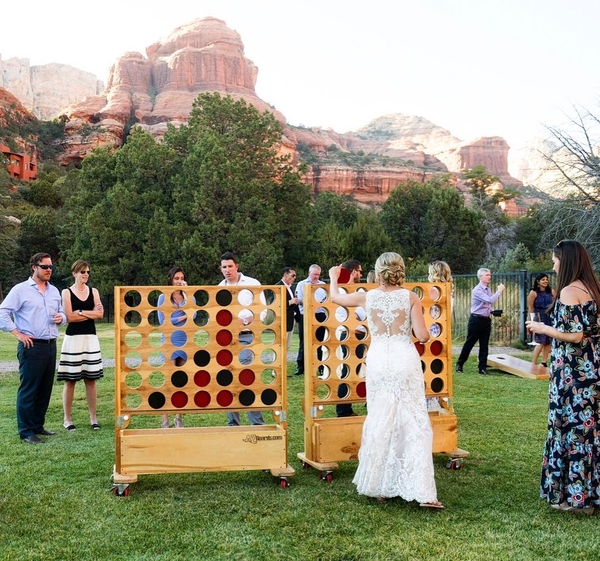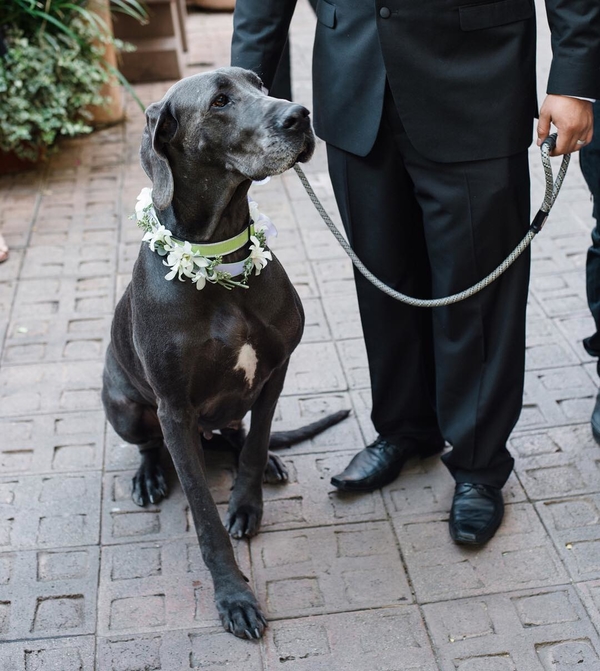Wedding Spending Is Down: 6 Things You Can Do • No. 3
Image by Cameron Clark Photography
Here’s some not exactly splendid news: wedding spending is down in every budget category across the board, with the exception of the Ultra Luxury Wedding segment (budgets of $500,000+, not including the honeymoon).
Economists have been forecasting a recession to hit towards the end of 2019 for a while now, and while those predictions are not always accurate, wedding spending tends to be a canary in the coal mine for how people are feeling about their financial future.
At the end of my 2019 State of the Wedding Industry post, I outlined six things wedding professionals will need to do in order to navigate the coming uncertainties. In this blog series called 6 Ways to Survive a Recession, I’m diving into each one a little bit more. Here’s what’s been previously covered:
Get super clear about what your brand is about and adjust your messaging accordingly.
Diversify your marketing and play the long game by building equity in the brand house you own.
The third thing you should focus on is this:
Cultivate an inclusive community that authentically cares about something beyond themselves.
If you haven’t read my 2019 State of the Wedding Industry post yet, I recommend you do so before you continue on. Pay particular attention to the part about inclusive communities, Supreme, and Gen Z, because that’s what I’m going to expand on today.
Caught up? Okay, let’s go:
The oldest of millennials are turning 40 this year, and the oldest of Generation Z are in the early years of tying the knot.
For the next ten years, you will be marketing to both millennials and Gen Z. One generation grew up experiencing September 11th as tweens, teens, and young college-aged students, and one generation grew up post September 11th. These two generations approach the world very differently from one another.
One of the things that is important to millennials when choosing wedding vendors is that they want to know if they can potentially be friends with you. They want to know if you personally are someone they could grab a glass of wine with or catch up with over brunch, long after the wedding day.
Over the past ten years, Boomer and Gen X wedding pros struggled with this more so than their younger peers as their mindset tended to be, "I already have friends, I just want to do your wedding, go home to my family, and have you trust my talent enough to hire me again for your future baby showers, kids' birthdays and mitzvahs, and your company's holiday parties and incentive events."
For the most part, wedding pros of all ages came around to the idea that talent alone was not enough to make them stand out and shifted their marketing to be a bit more personal – sharing more about themselves and giving a peek behind the scenes into their lives.
What you will find is that while sharing your personal life will still work well in attracting millennial clients, it will not resonate as effectively with your Gen Z clients. In fact, Gen Zers will be turned off the most by wedding pros who post their kids in every photo. These clients are the children of the mommy blogger and Instagram influencer generation and have first-hand experience in having their lives splashed across the Internet without their consent or knowledge. As a result, this is a generation that fiercely values their privacy. For the older members of the group, their mindset as consumers tends to be, “If you won’t respect the privacy and wishes of your own children, how can I trust that you’ll respect my privacy and wishes?”
Do not underestimate how strongly they hold this value. While you don’t necessarily need to stop posting photos of your kids altogether, if that’s currently a large part of your marketing, I’d recommend figuring out a balance so that you can still appeal to millennial clients while not alienating Gen Z clients.
Unlike millennials, Gen Z does not care that much about whether or not you are someone they could be friends with. Gen Z wants to know if your other clients are people they could potentially be friends with. They want to be part of an exclusive yet inclusive community that you have created.
Photo by Cameron Clark Photography
Your Goal Is To Create a Community, Not a Cult
Some business coaches will tell you to select 4-6 topics to talk about in your wedding marketing and rotate through them in your social media, blog, and newsletter. While having a schedule is helpful, and a tactic I often recommend, my approach to what goes on that schedule is a bit different.
To effectively reach Gen Zers, you’ll want to base your marketing on your "life guidelines,” as I call them, so that you can remain authentic to who you are and also attract an audience and potential clients who connect with your values rather than just your story.
Remember, people may like your story, but in the end what they really care about is how you can make their own story better in some way. Not focusing everything on yourself also means that you can live your life and not have to worry about having to mine the same stories week after week of how you left your corporate job or how you met your spouse or how you took a leap of faith and opened your business with just $40 in your pocket.
Your goal is to create a community, not a cult. If your marketing is developed based on your life guidelines, you will cultivate a community who can connect with one another over the meaningful things they have in common rather than over merely being a fan of you.
Plus, you are human, which means you are going to inevitably make mistakes, exercise poor judgment, or have some days where you are not the best version of yourself and say or do something you later regret. If all of your marketing is based on fauxthenticity (aka “curated imperfection” and select Gram-worthy “flaws”), you will face a backlash any time your carefully-designed mask slips, because you were actually the one who built the pedestal for yourself.
Authenticity doesn’t mean laying all of your cards face up on the table, and if your marketing is based on your life guidelines rather than on your “Story of Me,” you can allow yourself to truly be yourself, to share your opinions on a variety of non-surfacey issues, to apologize when you’ve dropped the ball or hurt someone, to not be “on” all the time. It is a much healthier way to run a business, in my opinion.
Photo by Cameron Clark Photography
What Are “Life Guidelines?”
Your "life guidelines" are based on your core values – they are essentially how your core values play out in your daily life, how you ensure you actually walk the walk of what you say you believe.
Using your life guidelines in your marketing is in addition to a client avatar, not as a substitute for it. The latter shows you the demographics and psychographics of who you want to work with (household income, where they like to shop, how they dine, etc), the former allows you to narrow that group down more specifically to how they approach life in relation to deeper issues. If you are creating a community of clients that could potentially be friends with one another, you will need to focus on more than ensuring they all carry a Neverfull and love SoulCycle.
I’ll share a few of my life guidelines and the “why” behind them as examples. If I am going to create a community of people who would want to hang out with each other and who I would enjoy working with as clients, then I want to focus on showing what I care about through my marketing and conversations, so that if it is something they care about too, they know they’ve found a group who is on the same page.
My Life Guideline: Whenever possible, support the original artist.
One of my core values is being a good steward of the resources I have. One of my life guidelines to ensure this happens is: whenever possible, support the original artist.
While I rarely talk about being a good steward, supporting the original artist is something I talk about more frequently because it is something I am passionate about.
This is a lesson I really learned after owning a business. Before, I didn't see the issue with buying a well-made knock-off (or, as they're more commonly called these days, "dupes") because I viewed it as being smart with my money. I thought being a good steward meant making your dollar stretch as far as it could go. I later learned that being a good steward means using every dollar as a "vote." Now when I spend my money, I am "voting" for the people who originally created the products/designs/ideas, not the copycats. And because my budget didn't magically increase when I changed my mind on this, it means I usually end up buying better, but buying less.
Not supporting the copycats matters to me. I've had people steal my work and pass it off as their own (not just newbies, but industry veterans, too), and it's hurtful, especially when done by someone I considered a friend.
I once read an interview with Tory Burch where she said she still gets upset when people steal her designs. It made me feel better that the founder of a famous fashion brand had those feelings as well, but it didn't surprise me because the creative work we all come up with, develop into something marketable, and put out into the world is deeply personal. After all, how many of us jokingly refer to our respective companies as our "first baby?"
When someone copies your ideas, they are hurting you, they are hurting your family, they are hurting your employees, they are hurting the creative community and the industry. It is personal and it is okay to be upset about it. Don't allow a grudge to rob you of future creativity, but you don't have to pretend it doesn't hurt.
When it comes to the community you’re cultivating for your clients, don’t forget your community of professional colleagues. While I'd recommend spending your time and energy with the people who support your original work, sometimes you do need to take an extra step to give yourself mental and emotional space. If the person who took your ideas was a friend, you don't have to allow them to be part of your inner circle anymore nor someone you continue to do business or collaborate with. You are also allowed to unfollow them on social media. Focusing on the good sometimes means removing the people who hurt you yet somehow think they still have a right to suck up your oxygen. You can set healthy boundaries now while still allowing for the possibility of redemption later on down the road. (I recommend the book Beyond Boundaries – part of the Boundaries series by Dr. John Townsend – if you're dealing with whether or not to let someone back into your life.)
My Life Guideline: People have a right to live fully, not just merely.
Another one of my core values is that every life has equal value. One of my life guidelines for this is the belief that people have a right to live fully, not just merely.
I am passionate about the fact that there is more to life than food and shelter. Basic needs matter, obviously, but so do art, athletics, and, yes, fashion and parties. The details matter. Being able to imagine, to create, to push yourself beyond what you thought possible, to feel self-confident and worthy of nice things, to be able to relax and joyfully celebrate life's milestones with the people you love and who love you matters. They matter a lot.
I want to spend my time with people who see everyone as fully human and worthy of every good thing life has to offer. More than that, I want to spend my time with doers – people who use whatever resources they have (money, time, creativity, literal votes) to help add good to the lives of others and who don't sit around waiting to "give back" later on.
It is not about which charities or organizations I am personally involved in – the people who resonate most with this life guideline likely also view generosity as a muscle to be developed and consistently exercised and not something to use as a PR or networking opportunity. They would probably get along with each other if they all found themselves in the same location.
These are examples of a couple of my own life guidelines. Yours may be different. Spend some time drilling down into your core values and examining how they play out in your life. How can you incorporate these into your marketing so that you are sharing your interest in something bigger than yourself?
Photo by Cameron Clark Photography
Won’t My Life Guidelines Turn Some People Off?
If you use your life guidelines to shape your marketing, you are 100% guaranteed to turn some people off.
This is okay.
If you are marketing to everyone, you are marketing to no one. You are creating an inclusive community, yes, but you are also creating an exclusive community. You are creating a community where people can connect with each other based on what they value, which is going to be based on what you value. This will automatically exclude those who don’t share your values.
This isn’t about creating a bubble, and everyone won’t agree on every tactic of how you go about supporting the arts, for example. The point is not to believe all the same things, the point is to create a community built on the foundation of the ideas you and they find most meaningful.
Gen Z wants to know more about who you actually are on a deeper, more philosophical level than they do about the behind the scenes of your daily life or your favorite brands or what you made for dinner this week. Fortunately, since you’re still marketing to millennials while starting to market to Gen Z, your life guidelines often play out in your daily life. You can dive deeper into the “why” behind the choices you make in your day-to-day routine, allowing both marketing strategies to support one another while these age groups overlap as wedding clients.



















